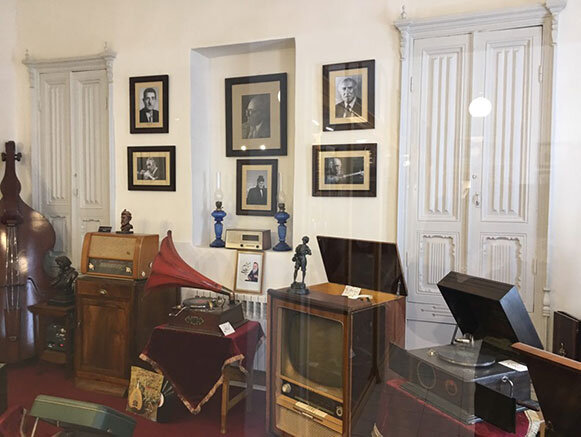Take a trip back in time with a visit to vintage radio museum in Tabriz

TEHRAN – Hundreds of vacuum tube radios, rare oil radios, classic radios, vintage radios, and solid-state pocket radios, are placed all under one roof at the Sound & Music Museum in the historical city of Tabriz, northwest Iran.
The museum, which also features various traditional and classical musical instruments, offers you to take a trip back in time and technology. It is a place to feel how communications technology has changed our lives over the past century.
Listening to the radio is a near-universal childhood experience, one that crosses geography, gender, and generations.
Radio, sound communication by radio waves, usually through the transmission of music, news, and other types of programs from single broadcast stations to multitudes of individual listeners equipped with radio receivers.
From its birth early in the 20th century, sound communication by radio waves astonished and delighted the public by providing news and entertainment with an immediacy never before thought possible. From about 1920 to 1945, radio developed into the first electronic mass medium, monopolizing “the airwaves” and defining, along with newspapers, magazines, and motion pictures, an entire generation of mass culture.
Based on the human voice, radio is a uniquely personal medium, invoking a listener’s imagination to fill in mental images around the broadcast sounds. More readily and in a more widespread fashion than any other medium, radio can soothe listeners with comforting dialogue or background music, or it can jar them back into reality with polemics and breaking news.
Radio also can employ a boundless plethora of sound and music effects to entertain and enthrall listeners. Since the birth of this medium, commercial broadcast companies as well as government organs have made conscious use of its unique attributes to create programs that attract and hold listeners’ attention.
Reverting to the Sound & Music Museum, it is worth noting that phonographs, vinyl records, turn tables, gramophones, TV sets, loudspeakers, sound recorders, and centuries-old bells are among other objects being on display.
The museum also features a rich archive of indigenous tonal and recorded music, comprising a collection of azan (the Islamic call to worship) soundtracks, pardeh-khani performances, which are dedicated to tragic stories of Muslim leaders , as well as Quran recitations, amongst others.
Capital of East Azarbaijan province, Tabriz, which is well-soaked in history and culture for millennia, embraces several historical and religious sites, including Jameh Mosque of Tabriz and Arg of Tabriz, and UNESCO-registered Tabriz Historic Bazaar Complex to name a few.
The ancient city was declared a world craft city of carpet weaving by the World Craft in 2016. It also bore the title of 2018 Islamic Tourism Capital last year.
Tabriz became the capital of the Mongol Il-Khan Mahmud Gazan (1295–1304) and his successor. Timur (Tamerlane), a Turkic conqueror, took it in 1392. Some decades later the Kara Koyunlu Turkmen made it their capital, it was when the famous Blue Mosque was built in Tabriz.
The city retained its administrative status under the Safavid dynasty until 1548, when Shah Tahmasp I relocated his capital westward to Qazvin. During the next two centuries, Tabriz changed hands several times between Persia and Ottoman Empire. During the World War I, the city was temporarily occupied by Turkish and then Soviet troops.
AFM/
